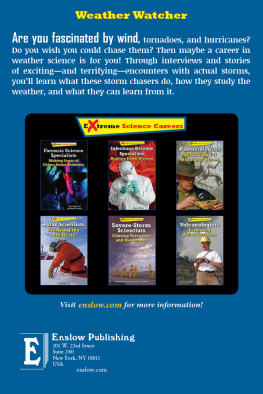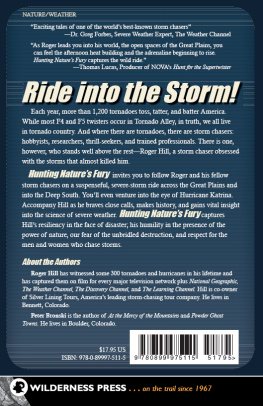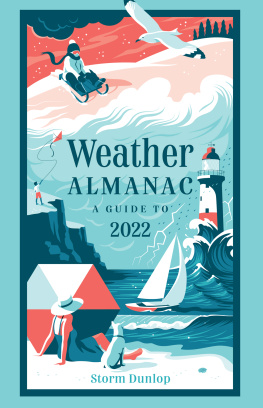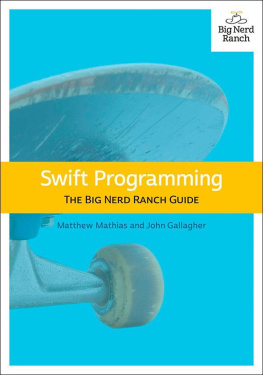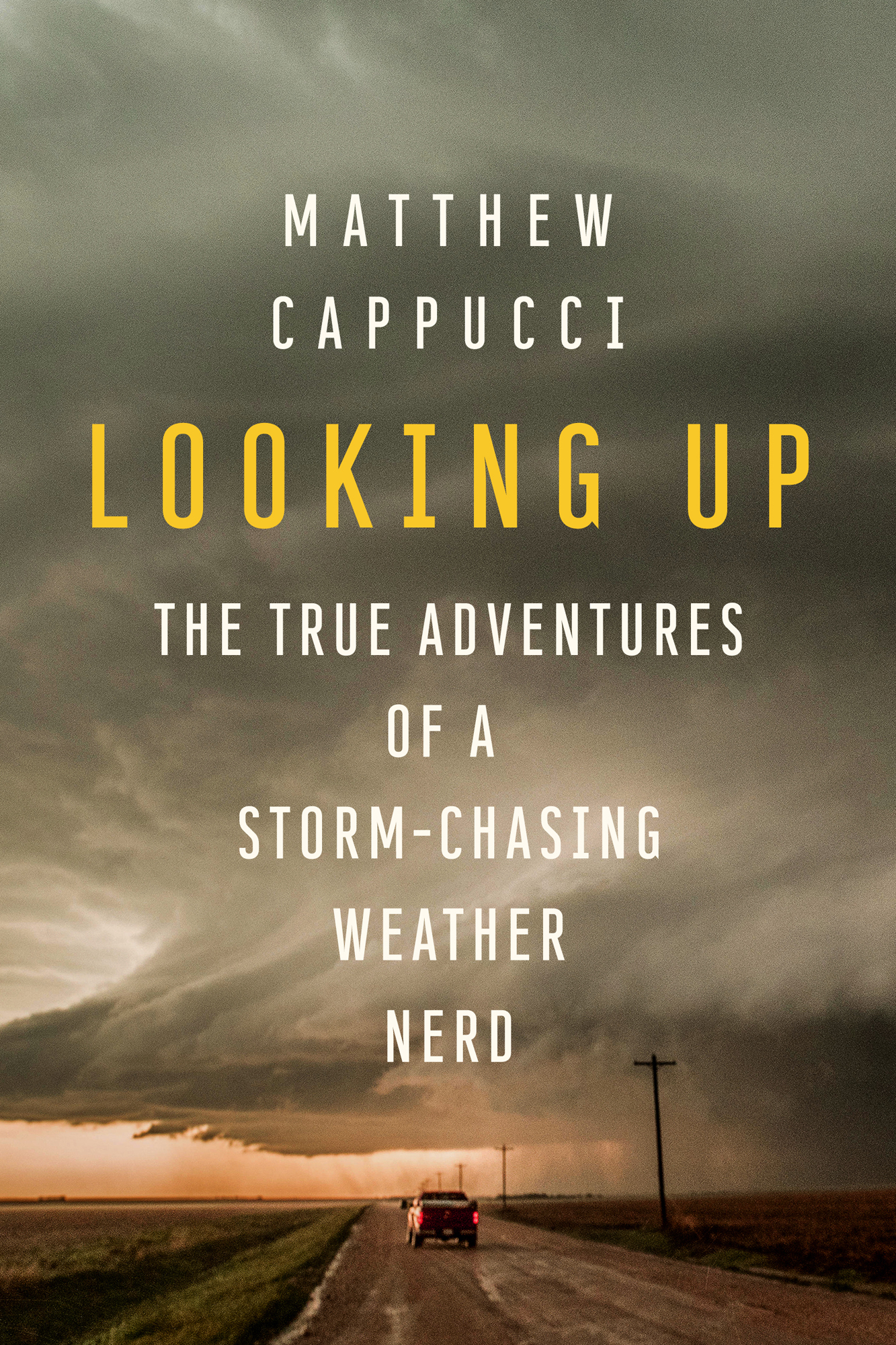Contents
Guide
Matthew Cappucci
Looking Up
The True Adventures of a Storm-Chasing Weather Nerd
To my parentswho got handed a quirky kid and gave the world to him every step of the way, even if that meant following a limousine for 40 miles on the highway so five-year-old him could gawk at it, buying $50 in pennies at the bank so seven-year-old him could sort through them, sitting at a railroad crossing for an eternity waiting for a train to activate the gates and flashers, or driving ten-year-old him to the beach at 2 A.M. to watch a thunderstorm over the water.
I also promised my mother that Id thank her in my speech when I received my first Emmy award. That hasnt happened yet, so, Mom, a book dedication will have to do for now. Well get the Emmy soon enough.
I should probably thank my sister, too. Though shes four years younger than me, Im still (slightly) afraid of her. If nothing else, she kept me humble.
Also dedicated to Waffle House. Sponsor me already damnit.
The Beginning
I f youre ever looking to get over a fear of flying, spending ten hours on a sweat-scented double-decker bus from Boston to Washington, DC, will do the trick. It was July 2012, and while every other friend of mine was spending the summer caddying or refereeing youth soccer games, I was on my way to weather camp. Apparently, its a real thing.
I was fourteen years old and had just completed my freshman year of high school on Cape Cod in Massachusetts. It wasnt the first time my activities didnt exactly line up with those of my peers.
Most elementary school kids spent recess trading Yu-Gi-Oh! cards or swapping Silly Bands; I was staring at the sky and journaling. My best friends in second grade were my teacher and the ladies in the front office. (Mrs. Monska, the head secretary, had a Jelly Belly machine on her desk. I visited every morning without fail.)
My classmates all had PlayStations, but I spent my First Communion money on a bulky camcorder. Any distant rumble of thunder sent me running to the garage to grab my bike for an impromptu storm chase around the neighborhood cul-de-sac. The footage I captured fell tragically short of National Geographic quality, but it was a start.
Dad, I got another lightning strike, I can be heard exclaiming in lisp-twinged second grade glee, my clunky camera work entirely missing the electrical discharge in question. It was a pink one. I then proceed to explain to the folks watching how ribbon lightning works, what a wall cloud is, and why the clouds are so dark. Despite growing up in the Boston suburbs, I sounded like a veteran Great Plains broadcaster. Since then, my passion has never wavered nor left me. On the contrary, it matured as I did.
I gave daily weather reports at school to my fourth grade class during Ms. DeLorenzos morning meeting. My field day and recess forecasts blared over the Indian Brook Elementary School intercom. My parents grew accustomed to 2:00 A.M. taps on the shoulder, nine-year-old me whispering to rouse them from their slumber. Can we go to the beach? I would beg, desperate for a view of whatever was happening in the sky.
Every year on my birthday, I corralled my family into the front yard to lay on a blanket and stare skyward as the Perseid meteor shower slung shooting stars across the heavens. And if thundersnow ever entered the forecast, I could go days on end without sleep.
Middle school passed similarly. The other kids took to sports and playing Call of Duty. I memorized the periodic table and landscaped in the summers to earn money for a laptop. In seventh grade, I enrolled in a class called Helping Others While Learning, taught by Warren Phillips, a renowned science educator who was inducted into the National Teachers Hall of Fame that year. It proved a pivotal turning point.
Mr. Phillips combined service learning with science geekery to constantly push the limits of what was possible in a classroom. He led each of us through making a gel electrophoresis, implemented an ambitious school-wide recycling project and, most importantly, was awarded a grant that allowed for the production of a student newscast. Three seconds into our first filming, I was hooked.
As it turns out, middle school isnt built for quirky kids who aim to grow up and become scientists. I stuck out like a sore thumb. I was adored by administrators and teachersespecially within the Science Departmentbut I certainly didnt blend in with my peers. Most were too wrapped up in drama and Doodle Jump. As the midpoint of eighth grade approached, I was looking for an escape plan.
That turned out to be Sturgis, a charter high school located in Hyannis, Massachusetts, about thirty minutes away from my hometown of Plymouth (yes, where the Pilgrims landed). Affectionately referred to as the island of misfits, Sturgis had a reputation as being a place where just about anyone could fit in (maybe even me). And the academics were second to none.
Erected in a converted furniture store, Sturgis was held together with duct tape and bubble gum. The roof leaked whenever it rained or snowed; we had no cafeteria or gym, and the art room was a house the school had purchased on an adjacent street. The campus wasnt much to look at. Somebody once left bananas in a locker during winter break, resulting in a fruit fly infestation we discovered in January. (The school decided to combat the pests by leaving dishes of apple cider vinegar all over, which promptly spilled and left sticky floors for more than a year.)
Because the school was located next to a row of shops, restaurants, and art galleries, it wasnt unusual for tourists to stroll through the building on a whim. Sometimes people walked their dogs through the main hallway. The architecture was labyrinthine.
The teachers were equally eccentric. My history teacher had a pilgrim voice and character he occasionally slipped into; another routinely donned a colander to impersonate the former Soviet satellite Sputnik. My Spanish teacher had just turned twenty-two, and my mustache-sporting art teacher sprinted into class the first day wielding a hammer and an unhinged stapler.
Our chemistry teacher sometimes taught while doing snow angels on the floor for [his] bad back. Mr. Carah, the physics teacher, could get away with saying just about anythingno joke was too off the wall. And my math teacher once sprinted home from class mid-lecture to make sure he had shut off his stove.
Since the school didnt have a designated vehicle to transport goods, they relied on a donated vehicle that the administration fondly referred to as the creeper van to shuttle around band and student council equipment. Every March, we had a fundraiser called Tape a Teacher, where a $5 bill would earn students a piece of duct tape to affix a teacher to the wall. One year we inadvertently taped Mr. Dunigan-AtLee, a math teacher, to a utility pole in front of the school with his arms outstretched in a Christ-like state on what turned out to be Good Friday (that led to an unfortunate article in the Cape Cod Times). We also made the news when four hundred copies of a yearbook reading STURGIS CHARTER pubic SCHOOL were delivered. That may or may not have been my fault.
It was an erratic, unconventional school where everyone was as quirky as I. Within a week, I knew I was home.
Now, freshman year at Sturgis had come to a close, and I was on my way to the nations capital for a two-week weather camp at Howard University. Ever the tireless parent, my mother had finally found a place for me after scouring the internet for opportunities. The National Oceanic and Atmospheric Administrationfunded summer program featured an immersive curriculum under the auspices of a former National Weather Service meteorologist.


